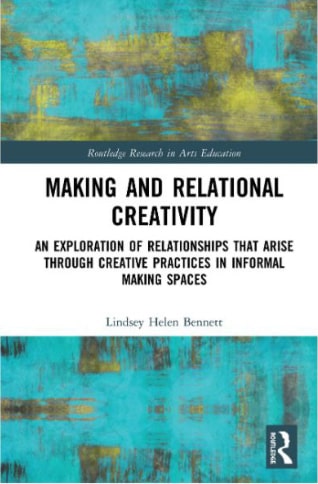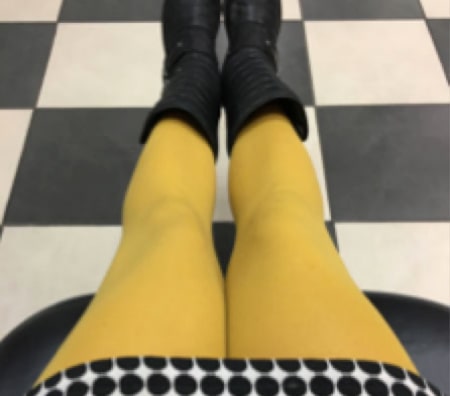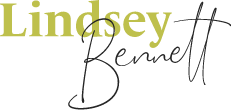
2020 Making and Relational Creativity
“In Making and Relational Creativity, Lindsey Bennett deftly navigates this difficult terrain, and does so with a lucid honesty, unflinchingly exploring the contradictions of her role as a professional artist–teacher.”
Jeff Adams Professor Emeritus, University of Chester
Making and Relational Creativity explores the developing relationships that arise between art teachers and students through creative practices outside of the secondary school arts curriculum. The author offers a powerful account of both her own and students’ experiences, exposing the complexities and problematic nature of creative practices emerging outside of the curriculum framework.
The book specifically explores relationships that develop in informal making spaces and argues for the significance of democratic creativity within art education. Examining the processes of making and the narratives arising within the A/R/Tography Collective, the lived experiences of both students and educator are revealed, providing a unique insight into their lives. The book explores the impact such spaces have on teachers’ professional relationships with students together with the impact on student relationships and urges educators to inhabit a more holistic role and tailor their pedagogy to meet the needs of students. In addition, the research also aims to address the implications of informal making spaces for the school curriculum in England.
This book will be of great interest for postgraduate students, researchers, and academics in the field of arts education.
Professor Jeff Adams
In terms of art educational research, there are few instances of research carried out by a serving teacher that attempt to examine the creative process with young people directly and dynamically. Fewer still are those that grasp the wider social and political context that gives rise to their own and their students’ creative activities, or understand so perceptively their own subjective position as researchers. In Making and Relational Creativity, Lindsey Bennett deftly navigates this difficult terrain, and does so with a lucid honesty, unflinchingly exploring the contradictions of her role as a professional artist–teacher. The result is a text that is both insightful and engaging, yet never loses sight of the tensions that inevitably arise, and which will be recognised by creative practitioner–teachers everywhere.
Lindsey has produced a singular book based on highly original research, the core of which comprises her accounts of working with a group of secondary school children through creative practices in a variety of environments. To give this added cogency, she has inserted her first-person reflective commentaries at key moments throughout the text, which offer insights into the youngsters’ reasoning, their practices and the research process itself as they all are engaged with it. Her approach is scrupulously transparent, necessitated by the ethical and safeguarding issues that the situations demand, and the challenge to professional practices that it poses. Lindsey’s combined embodiment of teacher, artist and researcher frequently transgresses orthodox boundaries, generating sensitive and personal issues that require managing with care and respect. The diverse nature of the group of young people, the “raw” quality of the material in terms of artefacts, practices and discourses add significantly to the relevance, originality and validity of the research and to this book.
The art practices in question are contemporary, and fit well with the current trends in socially engaged, relational and autoethnographic art works that populate art galleries throughout the world.
This is important in the creative field, as too often, new research has tended to derive from older, more traditional models of creative practice.
Lindsey, by contrast, has been sensitive to the popular and contemporary influences that are brought to bear on art practices. Her own well-established artistic practice, intensely autobiographical and packed with the material detritus of popular culture, informs her interactions and interventions with the youngsters’ work, and provides a sound basis for the analyses that inform her text. Her understanding of contemporary art and how it might feature in educational practices and pedagogies is one of the strongest and most original features of the book. Lindsey employs A/R/Tography, a research methodology that has risen in prominence in recent years because of its hybridity, which combines educational research practices with those of the contemporary artist.
This is entirely appropriate, and is an exemplary application of the methodology; this means the dichotomies of professional educational practices are revealed in stark detail as the book progresses. Her reflexive commentaries, in conjunction with the production of challenging art works, combine to make a powerful statement about the pressures that arise when young people in state education are subjected to a standardised and highly regulated curriculum in which they are compelled to conform, and the difficulties that arise as a consequence for teachers engaging in creative, critical and unorthodox pedagogical practices. The resulting insights that the book provides make this an important contribution to the field of art education, one that should make a significant impact on both policy and practice.

Cultural practices 2016
This module comprised of a small-scale case study into how students visually perceive the culture of the internet. I employed an ethnographic methodology using a reflexive paradigm to examine the links between culture, identity and community. Arts-based research methods were used through which to elicit data by asking participants to draw their vision of the internet. The research explored the theories of Bhahba (1994) and Bauman (2001; 2004) concerning culture, community and identity. The essay concluded by highlighting the importance of including digital technologies within art education to meet the ever-changing needs of students.

Institutions, discontinuities and systems of knowledge 2016
This essay explored the mechanisms of power and the socio-structure of a secondary school setting. I explored how neo-liberalism had permeated the culture of school through the culture of Ofsted and accountability, leading to the de-professionalisation of educators. I applied the theories of Foucault (1977), to explore methods of physical and metaphorical surveillance concluding with an analysis of the conflict between participant-led models of learning and the institution of schools. To highlight the discontinuity, I retrospectively analysed a project undertaken at masters level, where students were invited to produce a piece of self-generated art with no measurable outcome. The essay concluded by hypothesising that the space for self-generated art within the art curriculum is limited, due to the problematic nature of measuring outcomes for assessment purposes within the school environment.

Creativity in practice 2015
This module consisted of two components. Component one was the submission of a practice-based research project comprising of an interactive image game, designed to be played by students and myself. “The Photo Game”, was devised for multiple players roughly based on the concept of the game, ping-pong. A photographic image was submitted to an online digital folder by myself and students were then invited to respond to the image submitted and subsequent images submitted thus engaging in visual dialogue. The results of the Photo Game were published in book form and submitted for component one. The second component reflected on theories of Bruner (1976) and Wenger (2006), exploring the importance of communities of practice within art and facilitating play and creativity within the classroom. The essay continued by offering a critical account of my own practice based research and demonstrated how an environment free from curriculum constraints was conducive to creativity.

Social theory and education 2015
This essay comprised of two components, which I chose to write as one document with no distinction being made between them. Component one comprised of choosing the work of a theorist through which to investigate social theory. By reflecting on my own art practice, I was drawn to the theories of Jerome Bruner (1976) in relation to play. Component two was an autoenthnographic investigation into application of the theories of Bruner to further understand educational practice. The methodology employed was a qualitative semi-structured interview asking the participants to reflect on their time on a G.C.S.E art and design course in England to establish whether play had occurred during the process of making. My essay concluded by asserting that although play had occurred on some level it was as a by-product of the creative process due to curriculum constraints inhibiting the classroom environment.

Freedom and creativity within the school environment 2013
In this essay I explore the difficulties and dilemmas facing art educators introducing pupils to issue based and site specific art within the school environment. I also investigate impact of allowing total freedom over creativity for pupils within the classroom. How could I as an art educator effectively introduce new methods of teaching and learning into my teaching? My own practice is heavily involved in issue based art and I have a keen interest in introducing current issues that are relevant to pupils’ own lives. Craft (2000, p. 28) talks about fostering creativity in the social context of the classroom; ‘The development of strategies which encourage creativity in a social system need further investigation. This is particularly the case within the education system, for creativity is often cast as not being relevant to conventional education.’
